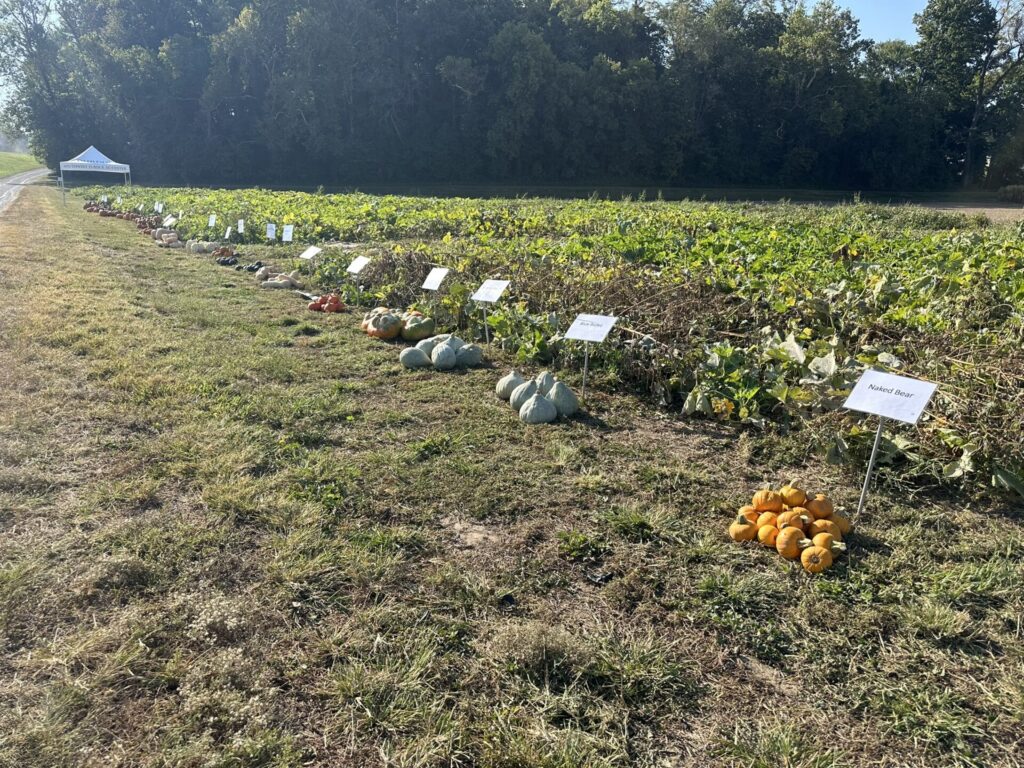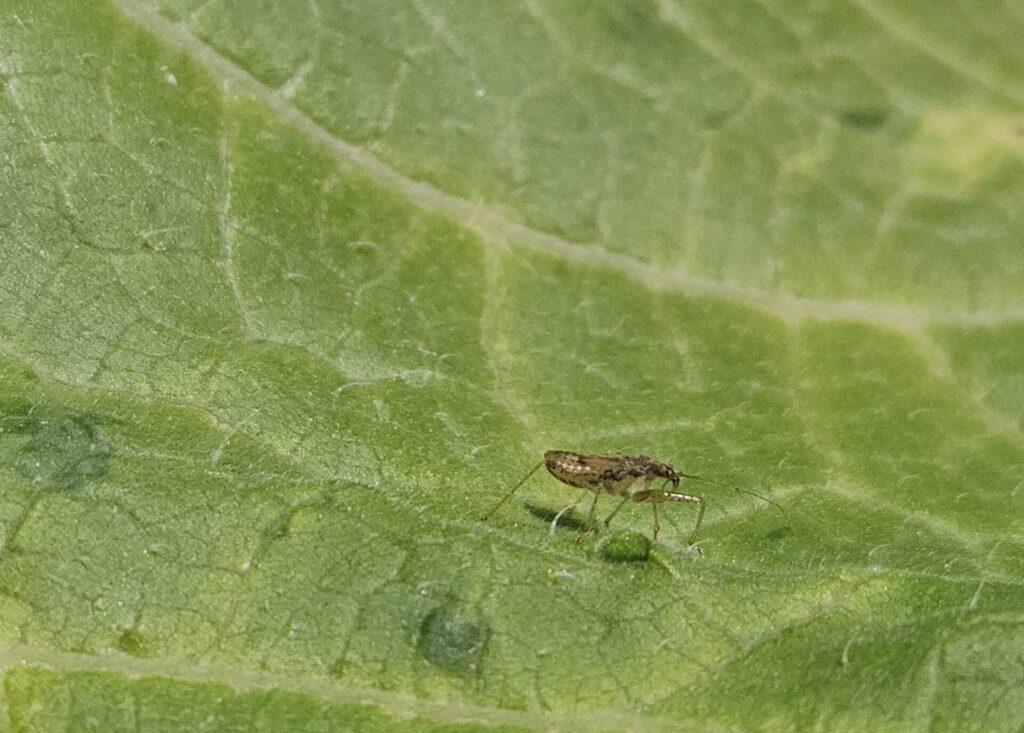This article provides a summary of information provided by Purdue Extension specialists at the 2025 Southwest Purdue Agricultural Center (SWPAC) Pumpkin Field Day.
-
Diverse Pumpkin and Winter Squashes
Dr. Liz Maynard gave a presentation on the diversity of pumpkins and winter squashes, covering different market types, their botanical classifications, maturity indicators, and storage life. Dr. Maynard’s presentation is available here. Dr. Wenjing Guan highlighted the crops grown in the field (Figure 1), including Jack-o’-lantern pumpkins, acorn, butternut, and kabocha, etc., and discussed their performance this year in southern Indiana. We extend special thanks to Barry Rupp of Rupp Seeds and Ryan Kingma of Rispens Seeds for donating the pumpkin seeds and providing valuable information on specific cultivars. Stay tuned for our upcoming publication on this topic.
-
Pumpkin Diseases
Dr. César Escalante presented on pumpkin diseases. He highlighted the top pumpkin diseases in Indiana, including phytophthora blight, powdery mildew, black rot/gummy stem blight, Plectosporium blight, bacterial fruit spot, viruses, and an emerging disease, cucurbit yellow vine disease. If you are interested to learn more about these diseases, here are the recommended readings: Managing Phytophthora Blight of Cucurbits and Downy Mildew of Cucurbits by Dr. Dan Egel. Pathogen Spotlight: Serratia ureilytica Causing Cucurbit Yellow Vine Disease by Dr. Kensy Rodriguez from Cornell University and Dr. Escalante. Dr. Escalante also shared the Pumpkin Disease Management Timeline for Indiana and the recently updated Pumpkin Fungicide Schedule.
-
Pumpkin Insects and Beneficials
Dr. Laura Ingwell discussed several major insect pests often observed on cucurbit crops and their management. For more information, refer to “Insect Management in Cucurbit Crops.” The most up-to-date management strategies are available on the Midwest Vegetable Guide website by selecting ‘Pumpkin’ and targeted pests. Dr. Ingwell also explained how to use pheromone traps to monitor Squash Vine Borer in cucurbit crops and her monitoring network. Lastly, she helped the audience identify pests and beneficial insects in pumpkin fields. This time of year, insect pests were sparse, but we found many natural enemies, including damsel bugs (Figure 2).
-
Pumpkin Weed Management
Dr. Steve Meyers reviewed the most common weeds in cucurbits, including pigweeds, common lambsquarters, purslane, and crabgrass, based on a 2019 survey. He explained why weeds are particularly problematic in pumpkin crops and discussed herbicide options, as well as recent research on herbicides such as Dual Magnum and Reflex. Dr. Meyers also discussed the use of cover crops for weed management. Graduate student Helen Angelina demonstrated the effects of different rye termination methods on weed control in the field plots. Stay tuned for the latest research findings from this project.
Field days are a valuable opportunity to engage with specialists, get your questions answered, and learn about the latest research. We look forward to seeing you at our future events.

